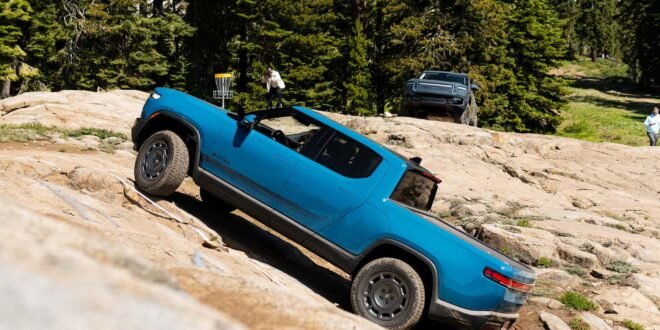The Debate Over Quad-Motor Drivetrains in Off-Road Vehicles
Electric vehicle (EV) manufacturers like Rivian are pushing the boundaries of performance with their quad-motor drivetrains, offering impressive power and versatility. However, for serious off-road enthusiasts, these advanced systems may not always be the best choice. While the Rivian R1T and R1S are among the most capable vehicles on the market, many off-roaders still prefer simpler setups that provide more predictable control in challenging terrain.
The R1T and R1S are equipped with over 1,000 horsepower and ample ground clearance, allowing them to tackle both high-speed sprints and rocky trails. Despite this, some off-road purists argue that a quad-motor system isn’t ideal for every situation. To understand why, it’s important to look at how different types of drivetrains handle traction and control.
Understanding Locking Differentials vs. Quad-Motors
A locking differential, or “locker,” is a mechanical component that ensures both wheels on an axle spin at the same rate. This means that if one wheel loses traction, the other can still push the vehicle forward. Lockers are commonly found in hard-core off-road vehicles, where consistent power distribution is essential for navigating difficult terrain.
In contrast, a quad-motor setup uses four independent electric motors, each controlling a single wheel. This allows for precise torque vectoring, which can improve handling on paved roads. However, this system also introduces a challenge: wheel slip. Unlike lockers, which mechanically link the wheels, quad-motors rely on software to detect and correct slip. This process can lead to jerking, tire spinning, and even a noticeable delay in response.
Real-World Testing: The R1T on Rocky Terrain
To illustrate this point, consider a rock-crawling test conducted by TFLEV, where host Roman Mica put the R1T through its paces on a slippery rock pile near Lake Tahoe. During the test, the vehicle experienced noticeable wheel slip and jerking as it navigated the trail. The sound of tires spinning and the smell of hot rubber were clear indicators of the challenges faced by the quad-motor system.
Mica noted that the R1T’s software had to detect wheel slip before making adjustments, which can be counterintuitive for drivers used to mechanical lockers. In traditional off-road vehicles, drivers often lift off the throttle when wheels start spinning to regain traction. But with the R1T, the opposite was true—drivers needed to press harder on the accelerator to get the vehicle moving forward.
The Pros and Cons of Quad-Motor Systems
Despite these challenges, the R1T and R1S still perform exceptionally well on the trail. Many journalists have successfully climbed the same rocky path without issue, provided they maintained steady pressure on the accelerator. For Rivian, the quad-motor system makes sense as it offers a balance between on-road comfort and off-road capability.
However, for off-road enthusiasts who prioritize control and predictability, mechanical lockers remain the preferred choice. These systems provide immediate power distribution, ensuring that all wheels are working together regardless of the terrain. This level of reliability is crucial for those who spend their time on rugged trails rather than paved highways.
Future Developments in Electric Off-Roading
As the EV market continues to evolve, new players are entering the space with innovative designs. For example, Scout is set to launch an electric truck featuring front and rear lockers, which could offer a compelling alternative to Rivian’s quad-motor approach. While this design may sacrifice some on-road performance, it could provide a more confident and controlled experience in off-road conditions.
For now, the debate between quad-motors and mechanical lockers remains ongoing. Each system has its strengths and weaknesses, and the best choice depends on the driver’s priorities. Whether you’re looking for high-performance on-road driving or pure off-road capability, there’s an EV out there that can meet your needs.
 Info Malang Raya Its All About World News
Info Malang Raya Its All About World News



